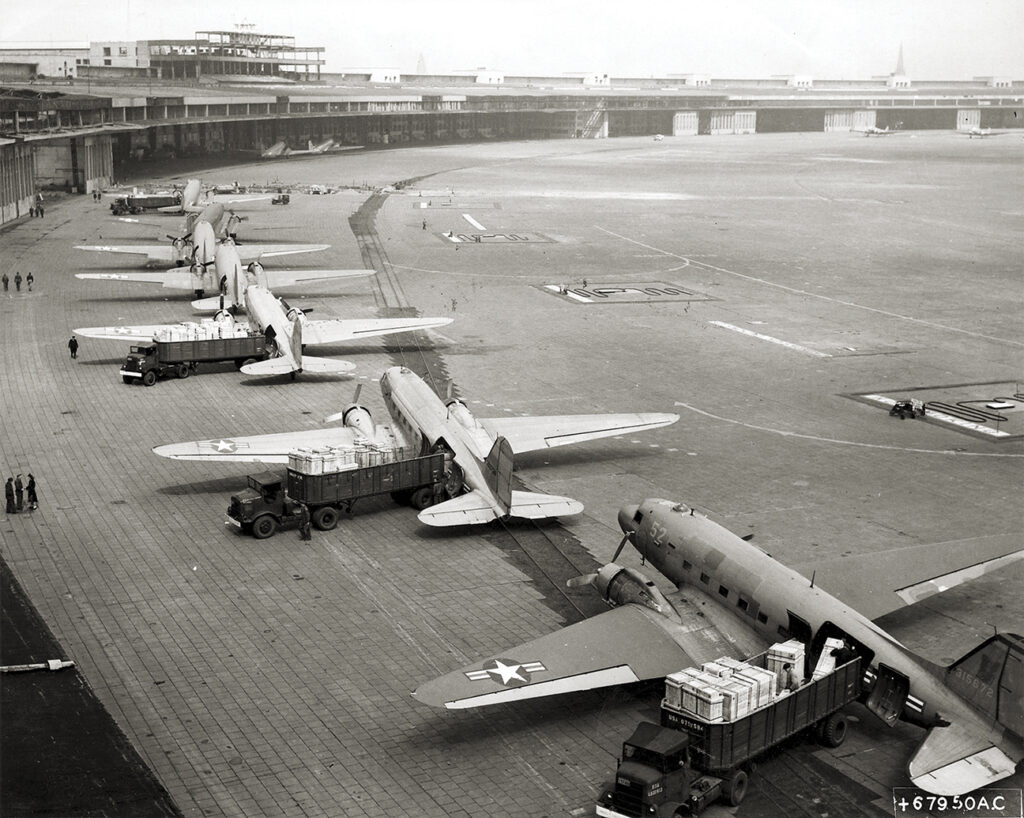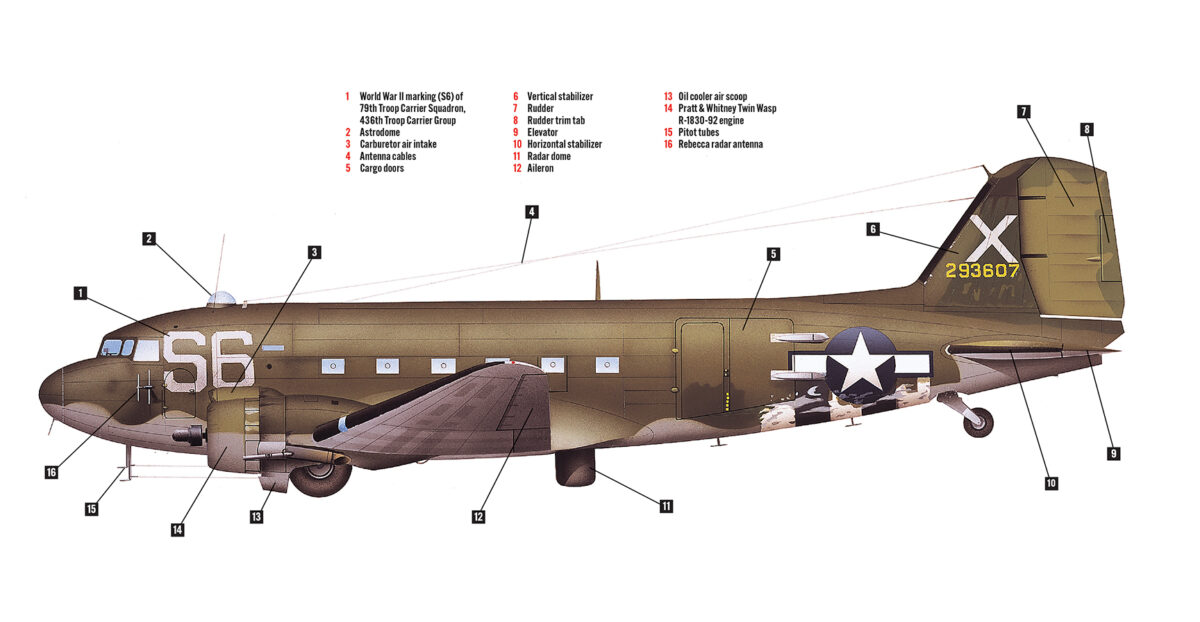Specifications
- Crew: Four (pilot, copilot, navigator, radio operator)
- Capacity: 28 fully loaded troops or 6,000 pounds of cargo
- Wingspan: 95 feet 6 inches
- Wing area: 987 square feet
- Length: 63 feet 9 inches
- Height: 17 feet
- Empty weight: 17,865 pounds
- Max takeoff weight: 31,000 pounds
- Power: Two Pratt & Whitney Twin Wasp R-1830-92 1,200 hp 14-cylinder air-cooled radial piston engines
- Maximum speed: 224 mph
- Service ceiling: 26,400 feet
- Maximum range: 3,600 miles
In 1932 the Aeronautics Branch of the U.S. Commerce Department issued a requirement for a safer monoplane air transport, which Boeing first satisfied with its Model 247. Aircraft designer Donald Wills Douglas soon outclassed all comers with his more advanced designs, including a prototype DC-1, the improved DC-2 and the Douglas Sleeper Transport (DST), with a rounded, more capacious fuselage capable of carrying up to 16 overnight passengers or 24 daytime riders. The DST first flew on Dec. 17, 1935. It and its 21-seat non-sleeper variant, the DC-3, revolutionized air transport as the first truly profitable airliners.
During World War II Douglas militarized DC-3s with cargo doors, hoist attachments and a strengthened floor. Designated C-47 Skytrains by the U.S. Army, Dakotas by the British Royal Air Force and Lisunov Li-2s by the Soviets (who built them under license), they became mainstays of Allied cargo and troop transport. Each plane could carry 28 fully equipped troops or up to 6,000 pounds of cargo, including a jeep or an M3 37 mm antitank gun. More than 10,000 C-47 variants were built.
After the war a new generation of faster four-engine airliners eclipsed the DC-3 on the transoceanic routes, but its war surplus numbers, outstanding safety record and overall performance kept it useful as a medium-range feeder liner for decades thereafter. Most of the transports used in the 1948–49 Berlin Airlift (see P. 24) were Skytrains of the Military Air Transport Service and RAF Dakotas. The U.S. military continued to use the airframe well into the 1970s in a variety of roles, including as the lethal AC-47D Spooky gunship in Vietnam.

This story appeared in the 2023 Summer issue of Military History magazine.
historynet magazines
Our 9 best-selling history titles feature in-depth storytelling and iconic imagery to engage and inform on the people, the wars, and the events that shaped America and the world.






